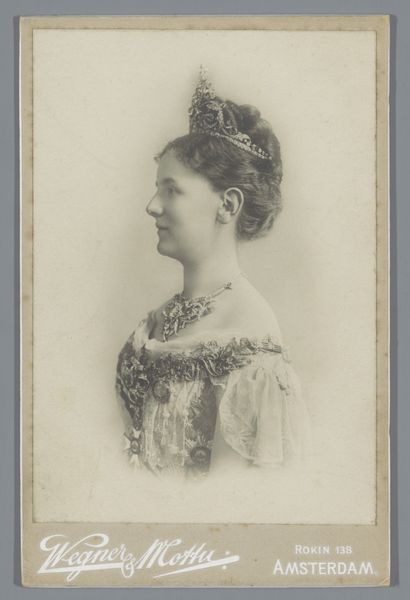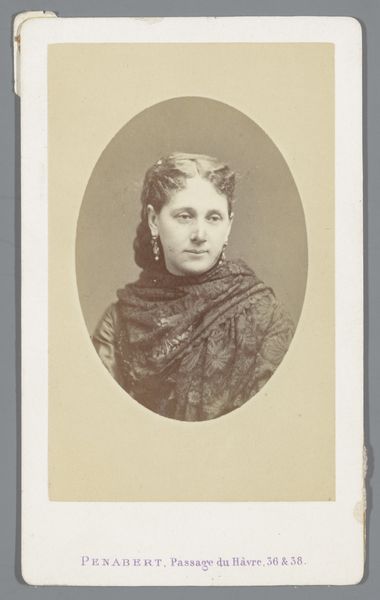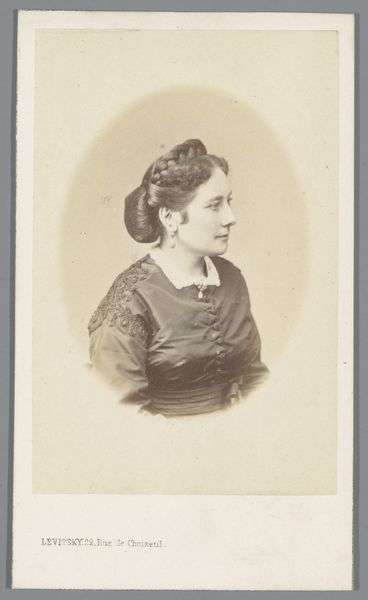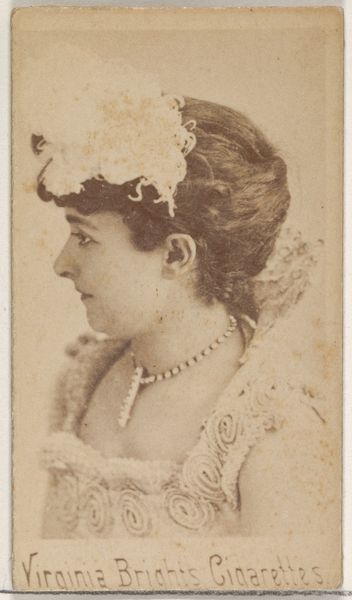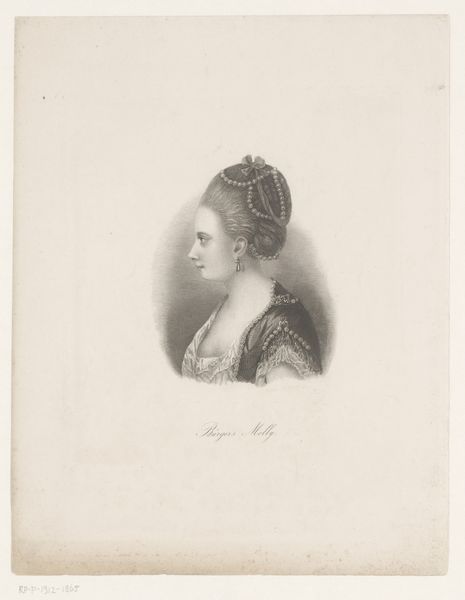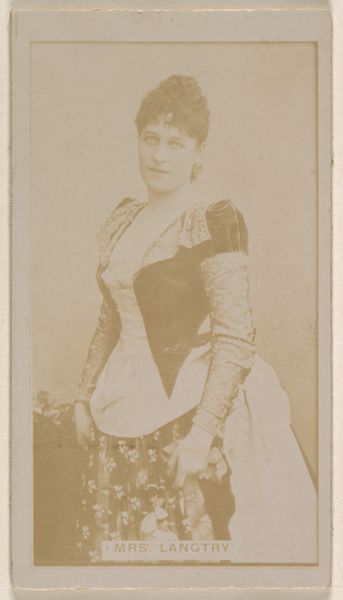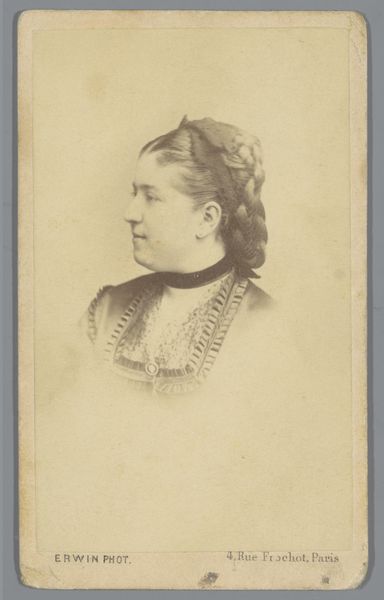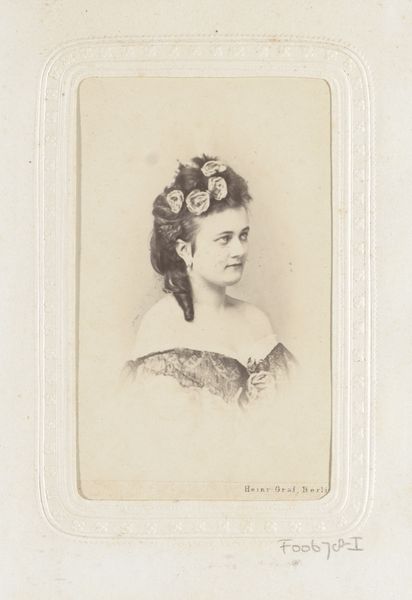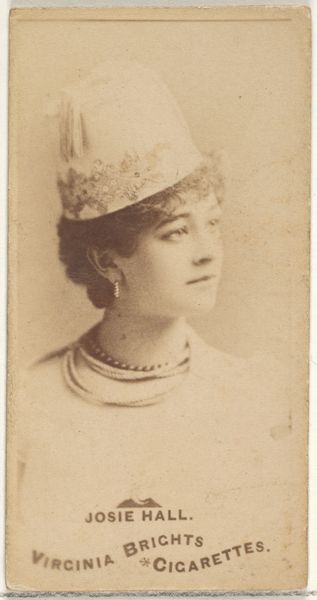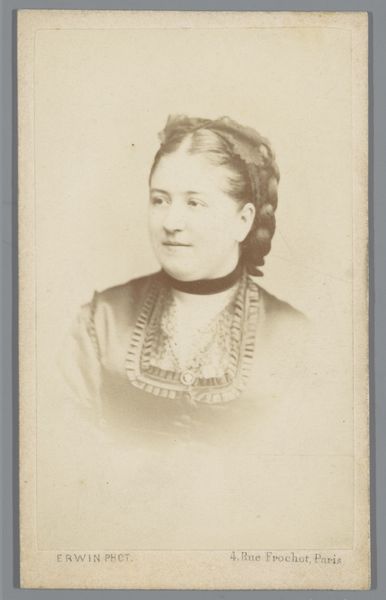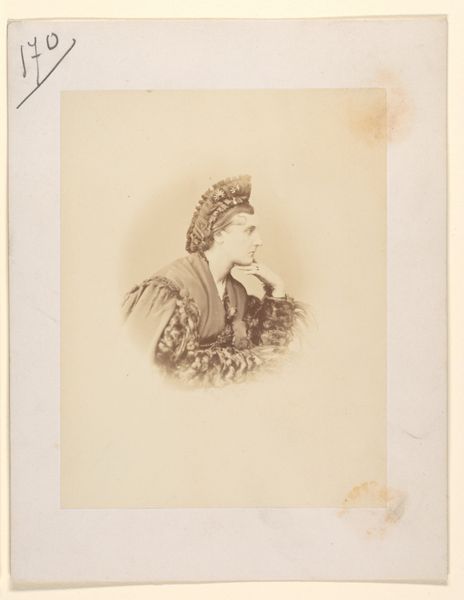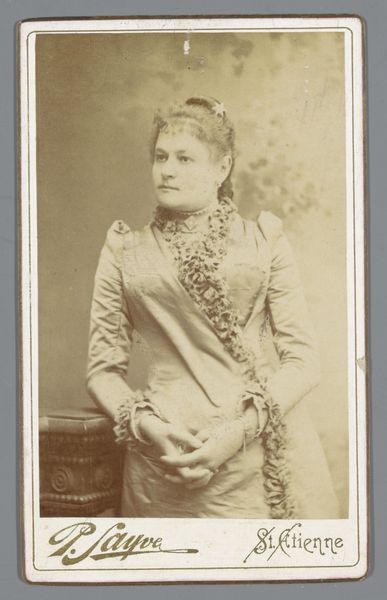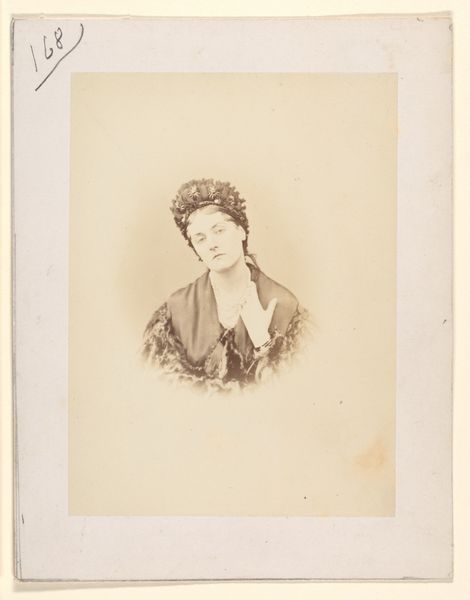
photography, gelatin-silver-print
#
portrait
#
photography
#
coloured pencil
#
gelatin-silver-print
#
history-painting
Dimensions: height 104 mm, width 61 mm
Copyright: Rijks Museum: Open Domain
Editor: Here we have Eugène Hallier's "Portret van Mme Gaveau-Sabatier," created sometime between 1864 and 1871. It's a gelatin-silver print. What strikes me most is the subject's very controlled and composed appearance. What do you see in this piece? Curator: This portrait gives us a glimpse into the constructed identity of women during the Second Empire in France. Note the subject’s hairstyle and clothing. It’s a deliberate presentation, reflecting the era's emphasis on social decorum and the objectification of women within patriarchal structures. How do you think this photograph participates in those power dynamics? Editor: Well, it seems to reinforce them, almost like a visual confirmation of societal expectations. It's beautiful, but it also feels like it’s contributing to the very specific way women were meant to be seen. Curator: Exactly! Now consider photography’s emerging role at this time. It wasn't just about capturing a likeness. It became a tool for constructing and disseminating ideals of beauty and status. Think about who had access to these images and what messages they conveyed about class, gender, and societal roles. Do you see any subtle resistance, though? Editor: Hmmm, I suppose the gaze is fairly direct and unwavering. There's an undeniable presence to her that hints at more complexity beneath the surface, perhaps pushing back ever so slightly against total objectification? Curator: That’s a valuable observation. It shows us that even within restrictive contexts, individuals can assert agency, however subtly. And by analyzing those subtle nuances, we can challenge the dominant narratives imposed on women in the 19th century. Editor: It’s fascinating to consider how much these visual details speak to the larger social and political context. I will look more deeply into these historical narratives! Curator: Absolutely! By questioning these portrayals, we can unearth hidden histories and challenge traditional interpretations of art and society.
Comments
No comments
Be the first to comment and join the conversation on the ultimate creative platform.
